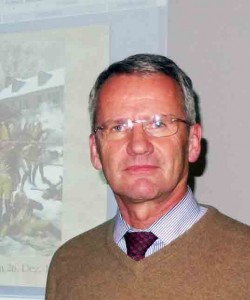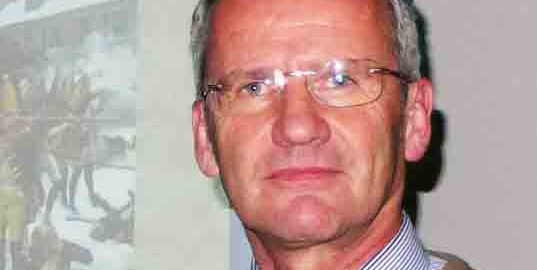Historian Prof. DR. Holger Thomas Graf informed the bridge-Stammtisch on the role of Giessen and Wetzlarern in the US War of Independence
CASTING / WETZLAR / MEDIUM HESSE (rge/ger/rg),

In the historical memory of Americans who Hesse for the identity of their young nation to play a significant role, underlined the historian Prof. DR. Holger Thomas Graf from the Philipps University Marburg at the Stammtisch of the German-American Club "The Bridge" Gießen-Wetzlar. In his presentation at the Hotel Köhler he lit under the title “Die „Hessian Mercenaries“ –
Facts and Myths”, the role of the Hessian mercenaries in the American War of Independence against some 230 Years, under which men from the central Hessian cities Giessen and Wetzlar fought.
The role of the "Hessians" a wide audience in the German TV films were known as "The winter was a summer" (D 1976) and "The great adventure of Kaspar Taste" (GDR 1982), informed Graef. The "land sold children" but called as mercenaries was rather standard of warfare then rinsed and money in the coffers of the German principalities was one of the reasons, that many Hesse came to America. Another reason was the appeal of the soldiers profession with good and safe payment and career, many of the citizens left their signatures to make the "subsidy treaties", explained the historian. The minority was forced Recruited. However, the Hesse had a very bad reputation. Prejudices were supported by Americans, as in the well-known story in Washington Irwin's "Legend of Sleepy Hollow", in which a Hessian mercenaries as a headless horseman plays a mysterious role. Americans were a barbaric enemy inoculated in various publications. This had an impact even into the post-war period from, when it came to the back rearmament of Germany and Eisenhower 1951 said, he did not want a Hessian mercenary. 19 Volunteers from the free imperial city of Wetzlar and 25 Pour in the Principality of Hesse-Darmstadt dressed for the British in the American War of Independence, Graef determined from available sources. Of these, one third were over 30 Year old. They were in the units of Hesse-Hannover, Used Hesse-Cassel and Waldecker regiments. The fact that only one death in the immediate acts of war, but 12 died from diseases surprise the more, as the only four Mittelhessen after the war to their former homes Europe returned. Five were proven in the US, 11 deserted and further 11 Soldiers of the whereabouts unknown. He also recalled a different fate and that of the "soldier's" Christopher Ludwich, the son of a baker in Giessen. That was about all sorts of detours in the service of Austria and Prussia, then come as a British sailor to Philadelphia and had brought it there later to wealth. 1777 of Hesse was appointed from the city on the Lahn as an American patriot to the chief baker and chief of field bakery of US troops in the Revolutionary War, informed Dr. Graef final. The bridge-President Roger Schmidt and Günther Schmadel thanked the historian for this interesting transatlantic history lesson.
